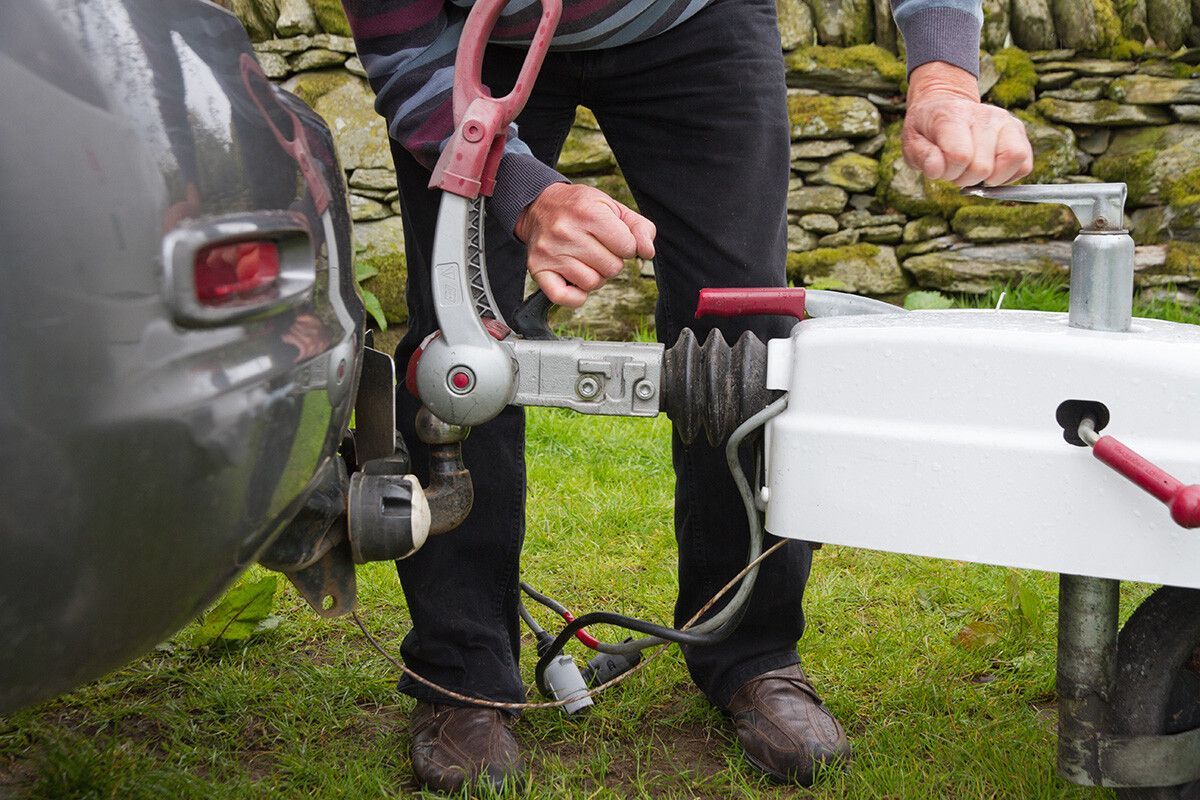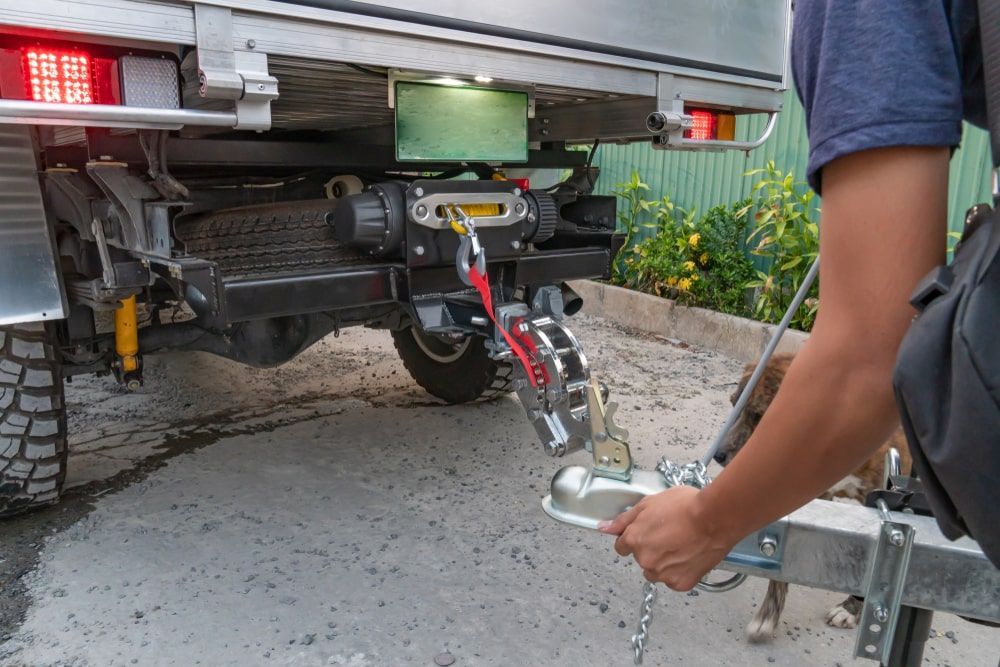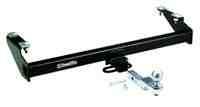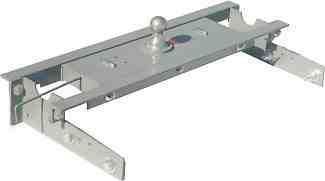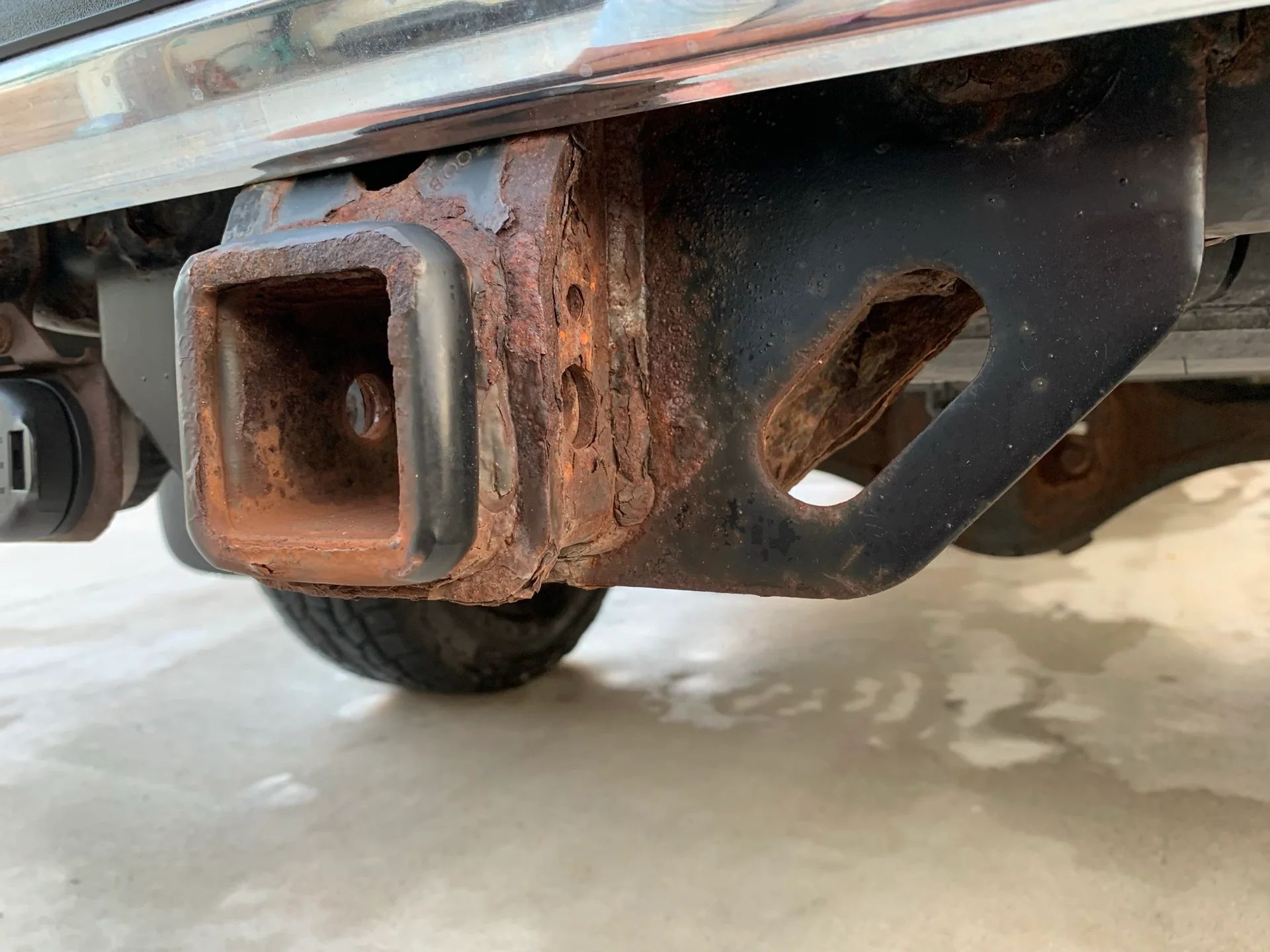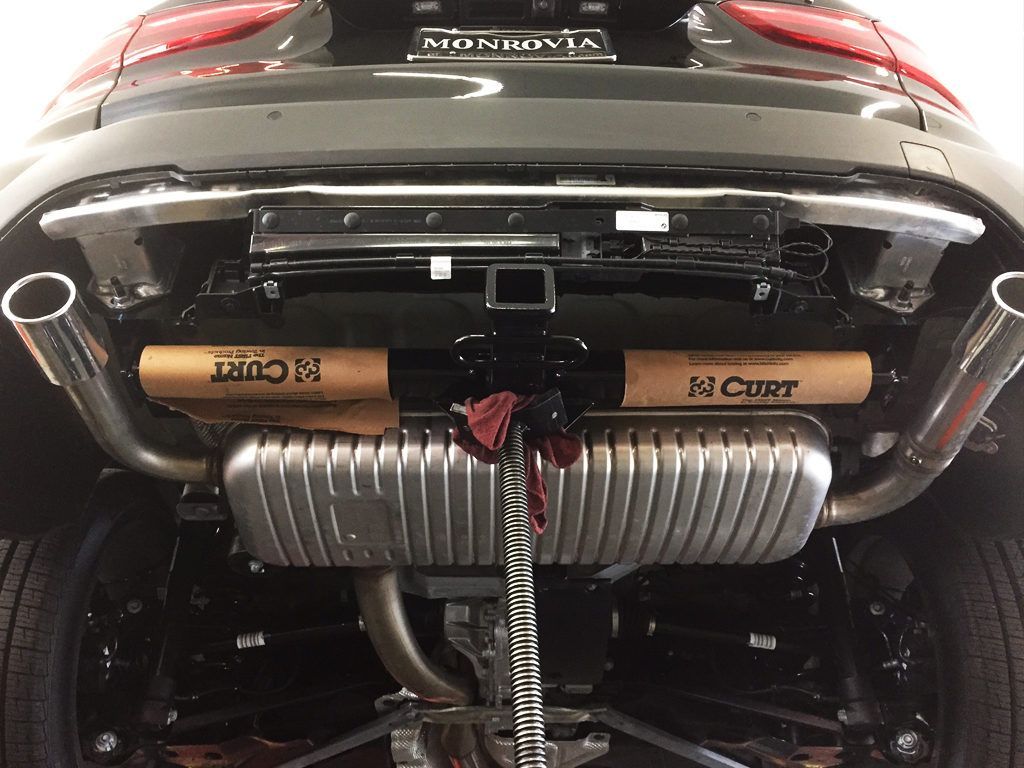Snow Removal Simplified: Choosing the Best Truck Plows
Essential Guide to Choosing the Right Truck Plows for Snow Removal
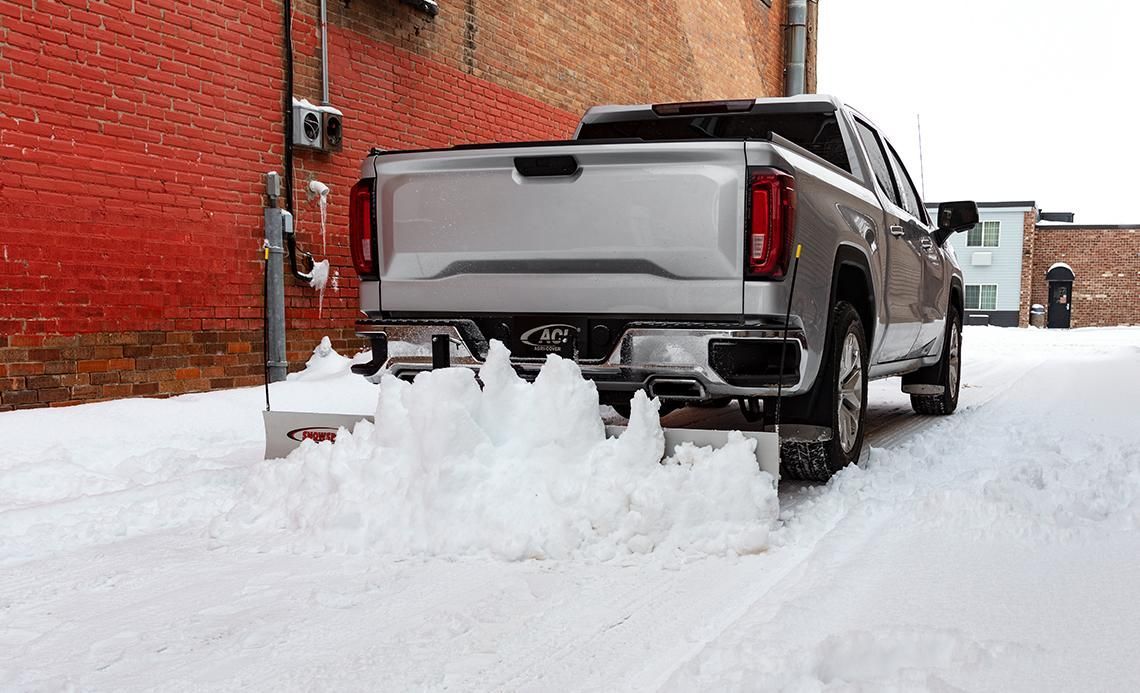
When winter's wrath blankets our roads with snow, a reliable snowplow becomes a truck owner's best ally. This guide will delve into the crucial aspects of selecting a snowplow that meets your needs, from assessing your snow removal requirements to understanding the different types of plows available. We'll also touch on the importance of proper installation and maintenance to ensure your safety and the longevity of your equipment. If you're grappling with the decision of which snowplow to attach to your truck this season, the insights here will clear your path to a wise choice. With a focus on steel plows, we'll equip you with the knowledge to keep your driveways and streets navigable, no matter the snowfall.
Key Takeaways
- Truck plows transform vehicles into efficient snow-clearing machines
- Selecting the right plow requires considering vehicle compatibility and snow conditions
- Regular maintenance and proper storage extend the life of truck plows
- Safety protocols during plowing ensure operator and vehicle protection
- Plow material choice impacts durability and vehicle wear
Introduction to Truck Plows for Snow Removal
As a seasoned installer, I understand the pivotal role truck plows play in snow removal. These robust tools transform your vehicle, be it an SUV or pickup truck, into a powerful snow pusher, essential for winter weather management. In the following sections, I'll delve into the advantages of utilizing truck plows and guide you through selecting the ideal model for your needs. Expect practical insights that will equip you with the knowledge to make an informed decision.
Understanding the Role of Truck Plows
In my years of experience, I've seen firsthand how truck plows are indispensable in combating the challenges of ice and snow. These pieces of equipment, with their sturdy blades, are the front-line warriors that clear the way for safe travel. The cutting edge of a plow blade is designed to efficiently slice through snow, transforming any compatible vehicle, from a standard pickup to a heavy-duty tractor, into a snow removal powerhouse.
Choosing the right truck plow hinges on understanding its role in your snow management strategy. It's not just about moving snow; it's about doing so with precision and reliability. Whether you're clearing a small driveway or a sprawling commercial lot, the right plow turns your vehicle into an efficient snow-clearing machine. My goal is to guide you through selecting equipment that not only fits your vehicle but also meets the demands of your snow removal tasks.
Benefits of Using Truck Plows in Winter
Integrating a truck plow into your winter arsenal offers a significant advantage when facing the relentless snowfall that blankets your driveway or commercial property. The hydraulics of a modern plow allow for swift and precise control, enabling you to lift, lower, and angle the blade with ease. This tool transforms your vehicle into an efficient loader, capable of moving large volumes of snow quickly, reducing the physical strain and time investment typically associated with manual shoveling.
From my professional experience, the use of truck plows is not only a time-saver but also a safeguard for your property. The right plow setup can prevent the accumulation of ice, which often leads to hazardous conditions. With the robust lift mechanism and durable design, these plows are engineered to handle the heavy lifting of snow removal, ensuring your driveway and access roads remain clear and navigable throughout the winter months.
Assessing Your Snow Removal Requirements
Choosing the right truck plow for snow removal starts with a thorough assessment of your specific needs. I'll help you evaluate the size of the area you need to clear, from a modest sidewalk to expansive parking lots. We'll consider the typical snowfall levels in your region and identify how often you'll need to deploy your plow. Whether you're maneuvering with a joystick to angle the blade or using a spreader to manage icy conditions, understanding these factors is crucial for selecting the right equipment. This section will provide you with the insights needed to make an informed choice, ensuring your snow removal is as efficient and effective as possible.
Evaluating the Size of the Area to Clear
In my role at the hitch corner, I've equipped numerous pickups with snow plows, and I've learned that the size of the area you intend to clear is a critical factor in choosing the right equipment. For smaller residential driveways, a standard snow plow attached to your pickup truck might suffice. However, for larger commercial spaces, you may require a more robust snow plow system capable of handling extensive areas without compromising on efficiency.
When I advise clients on snow removal solutions, I emphasize the importance of matching the snow plow to the capabilities of their vehicle. It's essential to consider the weight and power of your pickup trucks to ensure that the snow plow can operate effectively. A mismatch could lead to inadequate snow clearing or, worse, damage to your vehicle. Therefore, it's crucial to select a snow plow that aligns with both the size of the area and the specifications of your pickup, ensuring optimal performance and longevity.
Considering Typical Snowfall Levels
In my experience, the frequency and intensity of snowfall in your area are critical factors when selecting a truck plow. If you're in a region with light, infrequent snow, a smaller plow may suffice. However, areas prone to heavy snowfall will require a more robust system, capable of handling significant accumulations without faltering. It's about matching the plow's capacity with the expected snow load to ensure seamless operation throughout the winter months.
Having installed numerous plows, I've observed that clients often overlook the variability of snow density, which can affect plow performance. Wet, heavy snow demands a plow with higher durability and power, while powdery snow can be managed with less force. Understanding these nuances ensures your plow choice is not only based on snowfall levels but also on the type of snow you'll be clearing, leading to more efficient and effective snow removal.
Identifying Frequency of Snow Removal Needed
As an installer, I've noticed that the frequency of snow removal is a crucial consideration when selecting the right truck plow. If you're responsible for maintaining clear roads daily, you'll need a durable plow designed for frequent use. On the other hand, if you're only occasionally clearing snow, a lighter-duty model may be more appropriate and cost-effective for your situation.
Understanding the regularity of your snow removal tasks is essential for choosing a plow that won't let you down when you need it most. For instance, commercial properties with constant traffic require a heavy-duty plow that can withstand repeated use throughout the day:
- Assess the average number of snow events per season in your area.
- Consider the operational hours your plow will need to handle during each snow event.
- Factor in the downtime required for maintenance to ensure continuous performance.
This approach ensures your investment aligns with your actual needs, preventing over-expenditure on equipment that exceeds your requirements or, conversely, underinvestment that could lead to performance issues.
Exploring Different Types of Truck Plows
In my professional journey, I've encountered various truck plows, each with unique features tailored to specific snow removal needs. Straight blade plows are the workhorses of snow removal, offering simplicity and reliability. V-plows, with their distinctive shape, provide versatility in tackling different snow conditions. Winged plows boast extended reach for clearing larger areas efficiently, while expandable plows offer adjustable widths for precision and adaptability. In the sections that follow, I'll share insights into the practical applications and benefits of these plow types, ensuring you're equipped with the knowledge to select the right one for your situation.
Straight Blade Plows and Their Uses
In my professional capacity, I've seen straight blade plows become a staple for efficient snow removal. These plows are known for their simplicity and effectiveness in clearing snow from various surfaces. Their straightforward design makes them a reliable choice for both residential and commercial use, ensuring that snow is removed quickly and with minimal hassle.
When I recommend a straight blade plow to clients, I emphasize its ease of use and maintenance:
- Its uncomplicated structure allows for quick attachment and detachment from the vehicle.
- The straightforward mechanics mean fewer moving parts, which translates to less wear and reduced need for repairs.
- Its design is ideal for pushing snow straight ahead or to the sides with precision, making it a practical solution for most snow removal scenarios.
This type of plow is particularly suited for those who need a dependable and user-friendly option for tackling winter's challenges.
Advantages of v-Plows
In my professional experience, v-plows stand out for their exceptional versatility in snow removal. The unique V-shaped design allows for easier penetration and breakup of dense snowpacks, making them ideal for tackling heavy snowfall. Their adjustable wings can be positioned to efficiently clear wide paths or navigate tight spaces, providing a customizable solution for various snow removal scenarios.
The advantages of v-plows are particularly evident when dealing with the unpredictable nature of winter weather. These plows can quickly adapt to changing conditions, whether it's cutting through hardened snow or scraping over ice. The ability to angle each wing independently enhances their effectiveness, allowing operators like myself to strategically direct snow to the desired location without multiple passes:
| Feature | Benefit |
|---|---|
| V-shaped Design | Breaks up heavy snow, reduces resistance |
| Adjustable Wings | Customizable width for various scenarios |
| Independent Wing Control | Enhanced precision in snow direction |
As an installer, I've seen clients benefit from the v-plow's ability to handle diverse snow conditions, which is crucial for maintaining accessibility and safety on their properties. The v-plow's design not only improves snow removal efficiency but also minimizes the wear on both the plow and the vehicle, ensuring a longer service life and better return on investment.
Features of Winged Plows
In my professional experience, winged plows represent a significant advancement in snow removal technology, offering enhanced efficiency for large-scale operations. These plows feature extendable wings that increase the width of the clearing path, allowing for the swift removal of snow over extensive areas. The wings can be adjusted to various angles, enabling me to push snow more effectively and reduce the number of passes needed, which is particularly beneficial for clearing wide-open spaces like parking lots or long driveways.
One of the standout features of winged plows that I've found invaluable is their ability to contain snow between the wings, preventing spill-off and ensuring a clean pass. This containment leads to a more organized snow removal process and minimizes the need for follow-up clearing. As an installer, I've seen clients appreciate the time savings and reduced effort that winged plows provide, making them a smart choice for those looking to optimize their snow management practices.
Understanding Expandable Plows
In my role as an installer, I've seen expandable plows revolutionize snow removal for clients with varying needs. These plows feature adjustable-width blades that can be extended or retracted, offering unmatched versatility for different snow conditions and areas. The ability to modify the plow's width on the go means you can swiftly adapt to narrow driveways or wide parking lots, making expandable plows a smart investment for those seeking a one-size-fits-all solution.
My experience has taught me that the real value of an expandable plow lies in its efficiency and adaptability. With this type of plow, you can clear a path tailored to the immediate requirements of the terrain, reducing the number of passes needed and saving precious time during snow removal operations. This adaptability is particularly beneficial when transitioning between properties of different sizes or when facing unexpected snowdrifts and accumulation patterns.
Key Factors in Selecting the Right Truck Plow
Choosing the right truck plow for snow removal is a critical decision that hinges on several key factors. As an installer, I've learned that compatibility with your truck model is paramount to ensure a seamless fit and optimal performance. Material choices, such as steel versus polyethylene, also play a significant role in durability and effectiveness. Additionally, plow size and weight considerations must align with your vehicle's capabilities to prevent strain and ensure safety. Lastly, the choice between hydraulic and electric lift systems will affect the ease of use and maintenance requirements. In the following sections, I'll share insights on each of these crucial aspects to guide you in selecting the most suitable truck plow for your snow removal needs.
Compatibility With Your Truck Model
Ensuring that the truck plow you select is compatible with your truck model is a critical step in the process. From my experience, a mismatch between the plow and the vehicle can lead to suboptimal snow removal performance and even damage to your truck. It's essential to check the manufacturer's specifications for both your truck and the plow to confirm that they can work together effectively. This includes verifying the mounting system, weight capacity, and the electrical system compatibility for optimal functionality and safety.
When I guide clients through the selection process, I stress the importance of considering the truck's gross vehicle weight rating (GVWR) and the plow's weight. The truck must be able to handle the additional weight of the plow without compromising its operational integrity. Here's a simple table to illustrate the compatibility factors to consider:
| Compatibility Factor | Consideration |
|---|---|
| Mounting System | Must match the truck's make and model |
| Weight Capacity | Plow weight should not exceed truck's GVWR |
| Electrical System | Plow's electrical requirements must align with truck's system |
By paying close attention to these details, you can ensure a harmonious integration of the plow into your truck, leading to efficient snow removal and prolonged vehicle health. Remember, the right fit is not just about the physical connection; it's about ensuring that your truck can perform at its best with the plow attached, through every snowfall and every winter season.
Material Choices: Steel vs. Polyethylene
In my professional experience, the debate between steel and polyethylene for truck plows is a common one among clients. Steel plows are renowned for their strength and durability, making them a reliable choice for heavy-duty snow removal. However, polyethylene plows offer a lighter alternative that can reduce wear on your vehicle and are often more resistant to corrosion, which is a significant consideration given the harsh conditions they endure.
When advising on material selection, I highlight that polyethylene plows glide more smoothly over surfaces, which can enhance efficiency and reduce fuel consumption. On the other hand, steel plows can handle more abrasive conditions and typically offer a longer lifespan, provided they are properly maintained to prevent rust. The choice ultimately hinges on your specific needs, balancing the plow's longevity and performance against the operational impact on your truck.
Plow Size and Weight Considerations
In my role as an installer, I've learned that the size and weight of the truck plow you choose are crucial for maintaining your vehicle's health and ensuring efficient snow removal. A plow that's too large or heavy for your truck can strain the engine, transmission, and suspension, leading to costly repairs. I always recommend matching the plow's dimensions and weight to your truck's specifications to prevent undue stress on your vehicle and to promote safe, effective snow clearing operations.
From my experience, the right balance between plow size and weight can significantly enhance your snow removal efficiency. A lighter plow may require more passes but can be easier on your vehicle, while a heavier plow might clear snow in fewer passes but could shorten the lifespan of your truck if not properly matched. It's about finding that sweet spot where the plow's capabilities align with your truck's capacity, ensuring a seamless snow removal experience every time.
Hydraulic vs. Electric Lift Systems
In my years of installing truck plows, I've come to appreciate the reliability of hydraulic lift systems. These systems offer robust performance and can endure the rigors of heavy snow removal. However, they do require regular maintenance to ensure the hydraulic fluid and components remain in top condition, which is something I always remind my clients to consider.
On the other hand, electric lift systems are known for their simplicity and ease of use, making them a popular choice among my clients who prefer a more straightforward setup. While they may not match the durability of hydraulic systems, electric lifts are typically lighter and can be less taxing on your vehicle's battery and alternator, which is a crucial consideration for those looking to preserve their truck's longevity.
Installation and Operation of Truck Plows
Securing the right truck plow is just the beginning; proper installation and operation are key to effective snow removal. I'll walk you through the essential steps for correct plow installation, ensuring your equipment is ready to face the winter onslaught. We'll also look at efficient plowing techniques to maximize your snow-clearing efforts and discuss how to adjust plow settings for various snow conditions, enhancing your plow's performance and your safety on the job.
Steps for Proper Installation
Initiating the installation of a truck plow, I always begin by meticulously aligning the mounting bracket with the vehicle's frame. This crucial step ensures that the plow's weight is evenly distributed, preventing undue stress on the truck. It's imperative to follow the manufacturer's guidelines to the letter, securing all bolts and connections for a stable and safe attachment that will stand up to the rigors of snow removal.
Once the mounting hardware is in place, I proceed to connect the electrical components and hydraulic systems, if applicable. Careful routing of wires and hoses is essential to avoid any interference with the vehicle's existing systems. I take extra care to ensure that all connections are tight and sealed against the elements, providing a reliable setup that allows for smooth operation of the plow's lift and angle adjustments during the demanding winter months.
Tips for Efficient Plowing Techniques
During my time installing truck plows, I've gathered some efficient plowing techniques that can make a significant difference. One key strategy is to start in the middle of the area you're clearing and push the snow towards the edges; this method prevents snow from accumulating in the center and reduces the number of passes needed. It's also crucial to adjust your plow's angle according to the wind direction to avoid snow blowing back onto cleared surfaces, which can save time and effort in the long run.
I've also learned that maintaining a consistent speed while plowing is essential for both safety and effectiveness. Moving too fast can cause the snow to spill over the plow's edge, while going too slow might not carry the snow far enough, leading to inefficient clearing. By finding that optimal speed, you ensure that the snow is moved efficiently and your vehicle remains in control, reducing the risk of accidents and ensuring a thorough job.
Adjusting Plow Settings for Different Conditions
Adapting plow settings to different snow conditions is crucial for efficient snow removal. As an installer, I've learned that adjusting the blade's attack angle can significantly impact how the plow interacts with the snow, whether it's light and fluffy or wet and heavy. A sharper angle is more aggressive and effective for cutting through dense snow, while a less acute angle is better for lighter snowfalls.
Understanding the surface you're clearing is also essential when adjusting your truck plow. For instance, gravel driveways require a higher blade setting to prevent picking up rocks, whereas paved surfaces allow for a lower setting for a cleaner scrape. Here's a simple table to illustrate the adjustments needed for different conditions:
| Condition | Blade Angle | Blade Height |
|---|---|---|
| Dense, Heavy Snow | Sharper Angle | Standard Height |
| Light Snowfall | Less Acute Angle | Standard Height |
| Gravel Surface | Less Acute Angle | Raised Height |
| Paved Surface | Sharper Angle | Lower Height |
These adjustments not only enhance the plow's performance but also protect the surface being cleared and extend the life of the plow. It's a balance that, once mastered, leads to quicker, safer, and more effective snow removal, ensuring roads and driveways remain passable throughout the winter season.
Maintenance and Safety Practices
As an experienced installer, I can't stress enough the importance of routine maintenance checks and understanding how to prevent common mechanical issues with truck plows. In this section, we'll delve into the essential safety protocols during snow removal and provide off-season storage recommendations to ensure your equipment remains in top condition. These practices are not only crucial for the longevity of your plow but also for your safety and the efficiency of your snow removal efforts.
Routine Maintenance Checks
In my professional practice, I've learned that routine maintenance checks are the backbone of ensuring your truck plow operates at peak efficiency. Before the snow season begins and after each use, I inspect the plow for signs of wear, focusing on the hydraulic system, cutting edge, and mounting points. This proactive approach helps identify potential issues early, preventing costly repairs and downtime during critical snow removal periods.
My experience has taught me that maintaining the plow's hydraulic fluid at the correct level and checking for leaks is essential for smooth operation. I also make it a point to examine the electrical connections and lighting, as visibility and communication are key safety components when operating a plow in challenging winter conditions. These routine checks not only extend the lifespan of the plow but also ensure the safety of the operator and the efficiency of snow removal tasks.
Preventing Common Mechanical Issues
Preventing common mechanical issues with truck plows begins with a commitment to regular inspection and timely maintenance. I ensure that each moving part, particularly the plow's pivot points and hydraulic components, is lubricated before the onset of winter and periodically throughout the season. This simple yet effective practice reduces friction and wear, safeguarding against breakdowns that could impede snow removal operations.
Another critical aspect of preventing mechanical issues is the prompt replacement of worn parts. I keep a close eye on the plow's cutting edge and skid shoes, as these are the first to bear the brunt of contact with the ground. By replacing these components before they fail, I maintain the plow's efficiency and protect the vehicle from potential damage. Here's a table summarizing the key maintenance actions and their benefits:
| Maintenance Action | Benefit |
|---|---|
| Lubrication of Moving Parts | Reduces wear and prevents breakdowns |
| Timely Replacement of Worn Parts | Maintains plow efficiency and vehicle safety |
Safety Protocols During Snow Removal
In my professional practice, I prioritize safety above all during snow removal operations. It's essential to ensure that your truck plow's lighting and warning systems are functioning correctly to maintain high visibility, especially during low-light conditions or heavy snowfall. I always remind operators to wear appropriate safety gear, including high-visibility clothing and sturdy footwear, to mitigate the risk of accidents in slippery conditions.
Another critical safety protocol I adhere to is the practice of regular vehicle checks before commencing snow removal. This includes verifying that the plow is securely attached, the controls are functioning smoothly, and there is no obstruction to the vehicle's operational mechanisms. By taking these precautions, I help ensure that the snow removal process is not only efficient but also safe for the operator and surrounding individuals.
Off-Season Storage Recommendations
As the snow melts and the plowing season concludes, proper storage of your truck plow is crucial for preserving its condition. I recommend thoroughly cleaning the plow to remove salt and debris, which can lead to corrosion if left unchecked. After cleaning, I apply a protective coating to the blade and other metal parts to guard against rust during storage. Ensuring your plow is dry and covered in a cool, dry place will maintain its integrity and readiness for the next winter season.
In my experience, disconnecting and storing the hydraulic system components separately can prevent seal degradation and fluid contamination. I also advise elevating the plow off the ground to avoid moisture damage and to keep it out of direct sunlight, which can weaken the plow's material over time. By taking these steps, you can extend the life of your truck plow, ensuring it remains a reliable asset for efficient snow removal in the years to come.
Frequently Asked Questions
What are the main types of truck plows for snow removal?
The primary truck plows for snow removal are straight-blade, V-plow, and winged plows, each offering unique capabilities for efficient snow clearance.
How do I determine the right plow size for my truck?
Selecting the right plow size for your truck hinges on the vehicle's weight and front axle capacity; consult your truck's manual and match it to the plow's specifications for optimal performance and safety.
What should I consider when choosing a truck plow?
When selecting a truck plow, consider compatibility with your vehicle, plow weight, ease of installation, and the type of terrain you'll be clearing.
Can I install a truck plow myself, or do I need professional help?
Installing a truck plow can be a DIY project, but for safety and proper setup, professional installation is recommended, especially for hydraulic systems and electrical connections.
What maintenance is required for a truck plow after use?
After each use, truck plow maintenance should include cleaning off snow and ice, inspecting the blade for damage, and lubricating moving parts to prevent rust and ensure smooth operation.
Conclusion
Selecting the right truck plow for snow removal is a critical decision that hinges on compatibility with your vehicle, the material of the plow, and the specific snow conditions you'll face. The proper choice ensures not only efficient and effective snow clearing but also the longevity of both the plow and the vehicle. Regular maintenance and adherence to safety protocols are paramount to maximize the plow's performance and operator safety. Ultimately, investing time in choosing and caring for your truck plow translates to reliable, streamlined snow management season after season.
Essential Guide to Choosing the Right Truck Plows for Snow Removal
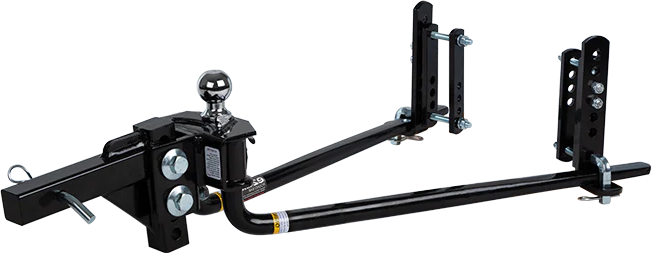
WE WON'T LEAVE YOU HANGING ON INSTALLATION.
Explore an extensive range of essential products for cars, SUVs, and trucks, featuring items that cater to both style and functionality,
including versatile cargo carriers suitable for roof and trailer hitch setups.
OUR CUSTOMERS LOVE US

We needed to swap our hitch mount and ball but were unsure exactly what we needed. The two men working were extremely helpful in pointing out what we needed and even helped us swap the hitch despite them being about to close. Great service!!
Allison Safko

Very quick and friendly service. Hitch installed on a Ford Escape for an upcoming move – took less time than anticipated and job well done. Highly recommend.
Matt Madsen

This place is great. Knowledgeable and super fair on prices. Got a break controller here and it worked out of the box. People here know their stuff. Way better than going to Uhaul.
James Olsen

CONTACT US
Hitch Corner (Littleton)
Phone:
(303) 904-1558
Email:
info@hitchcorner.com
Address:
10677 W. Centennial Rd. Suite 103 Littleton, CO 80127
BUSINESS HOURS
- Mon - Fri
- -
- Saturday
- -
- Sunday
- Closed
All Rights Reserved | Hitch Corner | Powered by Proshark



